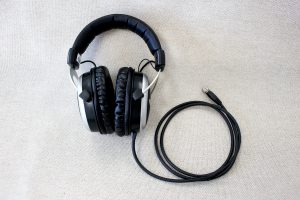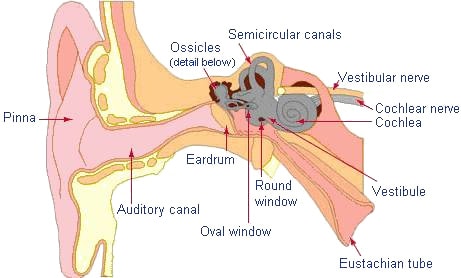Bone Conduction Defined:
This is one of our most frequently asked questions. And it is an important one!
Bone conduction is instrumental in the efficacy of a number of Unyte Health products, including the Focus System and VoicePro.
You are actually receiving bone conduction all the time. The easiest way to understand this is to think about how your voice sounds when you speak versus how it sounds when recorded. Have you ever noticed how your recorded voice sounds different to you? Perhaps it sounds “thin” or “tinny.” Usually it doesn’t sound similar to how you hear your voice. Yet, if you were to ask others, they’d say, “Yes, that sounds like you.”
Why? Because a recording is only picking up your air-conducted voice. You naturally hear your voice through air conduction and bone conduction. Bone is a good conductor of sound. The bone conduction gives your voice the richness you are used to hearing when you speak.
How Does It Work?
Air conduction refers to sound from the outside carried by air waves from the outer ear and transferred to electrical waves in the inner ear. Bone conduction refers to sound conducted as subtle vibration along the bones to the inner ear housing the organs of hearing and balance. The sound vibration actually activates both the sense of hearing and the organ of balance. The vibration, in fact, is carried through the entire skeletal structure.
Unyte Health programs make use of this natural process by inserting a bone conductor into the top of Unyte headphones. The low frequencies of music have more acoustical power and generate more vibration than high frequencies. Therefore, lower frequencies will have a greater effect on body organization and the sense of being grounded.
Bone conduction is an important tool to increase activation to the vestibular system. This enhanced activation results in improved body awareness, balance, coordination and increased muscle tone.
Unyte Health uses both air and bone conducted sound in the Focus System and VoicePro because of the therapeutic goals when using these systems. One goal is to train the auditory system to discriminate and process the entire range of language frequencies (air conduction). Other goals include input to the vestibular/cochlear organ to provide a grounding/calming influence and to help with body organization (bone conduction).
Sound affects our whole nervous system and bone-conducted sound may have a more direct influence because of the subtle physical vibration. Two important areas affected by bone conduction are the vestibular system and the vagus nerve.
The vestibular system is responsible for coordinating movement with balance and awareness of the body as it moves through space. It plays a key role in organizing motor output and posture. Both bone conduction delivered through the headphones and movement activities of the Playbook activate the vestibular system. Concurrent activation of the vestibular and auditory systems has an organizing effect on the body and brain, a critical foundation for learning.
The calming influence of bone conduction, which has been clinically observed for decades, likely comes from stimulation of the vagus nerve. The vagus nerve is the 10th cranial nerve and extends from the base of the brain to the gut. When the vagus is stimulated, it elicits the relaxation response. This slows heart rate (through release of acetylcholine) and relays instructions to release certain proteins and enzymes for calming. When relaxed, we are better able to concentrate, self-regulate and connect with others in this calmer, safe state.
Using Air/Bone Conduction
Unyte Health programs have been combining air and bone conduction in headphones since 1990 and is the first to combine bone conduction with structured movement activities. This combination accelerates body organization, the foundation of brain organization. Unyte Health bone conduction headsets have independent volume control. Our training includes instruction on volume adjustments for varying client needs.
When starting with new clients, iLs recommends starting with lower bone conduction levels and gradually increase as the client progresses through a program. The same gradual approach is recommended for Dreampad users, who may or may not be using the Dreampad in conjunction with another iLs program.
Interested in learning more about Unyte Health programs? Get in touch!






 © 2025 Unyte Health US Inc.
© 2025 Unyte Health US Inc.